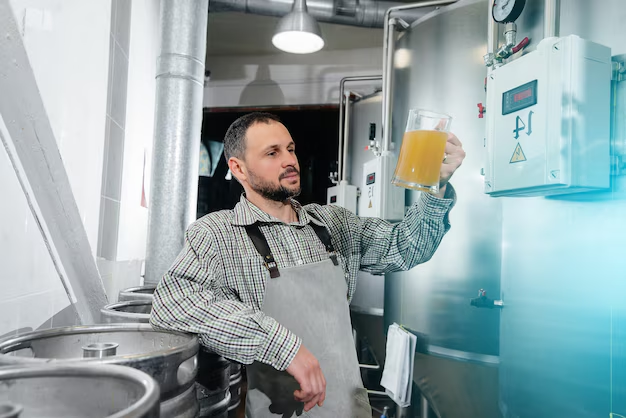Maximizing Ice Production in Your Frigidaire Refrigerator: Simple Solutions for a Cooler Home
Are you finding that your Frigidaire refrigerator just isn't keeping up with your need for ice, especially during those hot summer months or for family gatherings? You're not alone. Many homeowners experience issues with ice production, and the good news is that there are several ways you can boost your ice-making efficiency at home. This comprehensive guide will explore practical, actionable steps to increase ice production in your Frigidaire refrigerator. Let's get started!
Understanding Your Frigidaire Ice Maker
How Does Ice Production Work?
Before tackling ways to increase ice production, it's helpful to understand how your ice maker functions. A typical Frigidaire ice maker uses a straightforward process: water flows into a mold, freezes, and then ejects the ice into a storage bin. This cycle repeats, taking an average of 90 minutes to produce a batch of about 8-10 ice cubes.
Recognizing Normal Ice Production Levels
Many ice makers can produce up to 3 pounds of ice daily, but several factors can influence this, including the freezer temperature, water supply, and overall refrigerator maintenance. If you notice a significant drop in ice output, it’s essential to investigate further.
Steps to Increase Ice Production
Optimize Freezer Temperature
🔍 Recommended Action: Keep your freezer set between 0°F and 5°F.
The internal temperature of your freezer plays a critical role in ice production. If the freezer is too warm, ice cubes won't form efficiently or quickly. Check your fridge's manual for guidance on how to adjust the temperature settings, ensuring they remain within the recommended range.
Check and Enhance Water Supply
🔍 Recommended Action: Ensure water pressure is between 20 and 120 psi.
A steady water flow is integral to efficient ice production. Check for kinks or blockages in the water line, which can restrict the flow. It’s also worth confirming that the fridge is connected to a clean and reliable water source. Installing a dedicated water line filter can enhance the water quality by removing mineral deposits that hinder ice formation.
Maintain the Ice Maker Unit
🔍 Recommended Action: Regular maintenance can prevent common pitfalls.
Regularly inspect and clean the ice maker unit to prevent mold and mineral buildup, which can affect performance. Ensure that the ice maker arm is not stuck in the off position. If you notice any unusual noises or the unit is not working at all, you might need to reset or repair it.
How to Clean Your Ice Maker
- Turn Off the Ice Maker: Locate the on/off switch, usually found on the ice maker itself or via the fridge’s control panel.
- Remove Ice Bin and Dump Ice: Discard old ice to make way for fresh cubes.
- Wash the Bin: Use warm soapy water and ensure it’s dried thoroughly before reinstallation.
- Wipe the Ice Maker: Use a damp cloth with mild detergent to clean the ice maker's components, ensuring no detergent residue remains.
Optimize Refrigerator Placement
🔍 Recommended Action: Ensure proper ventilation.
Consider the refrigerator's placement in your kitchen. Ensuring there’s ample space around the unit can enhance efficiency. An inadequately ventilated fridge will overheat, impacting its overall performance, including ice production. The rear and sides need room to breathe and dissipate heat effectively.
Troubleshooting Common Ice Maker Issues
Ice Maker Not Producing Ice
If the ice maker isn’t functioning, check if:
- The Ice Maker Is On: Double-check the switch or control panel settings.
- Water Filter Needs Replacing: Filters should typically be changed every 6 months.
- Ice Formation Cycle Is Interrupted: Ensure that the ejector's motor is functioning correctly.
Ice Is Small or Deformed
Deformed ice cubes can indicate:
- Incorrect Freezer Temperature: The freezer might be too cold or not cold enough.
- Water Line Issue: Check for leaks or clogs.
- Aging Ice Maker Parts: Worn-out ice molds can affect ice size and shape.
Ice Maker Produces Frosty Ice
Frosty or cloudy ice may be caused by:
- Minerals in Water: Using filtered or bottled water can prevent this.
- High Humidity in Freezer: Consider adjusting the refrigerator’s environmental controls to handle excess moisture effectively.
Extending Ice Maker Longevity
Upgrade to Energy-Efficient Models
If your refrigerator model is outdated, consider upgrading. Newer models often include more efficient ice makers that produce ice faster and with greater energy efficiency, saving you money on energy bills over time.
Regularly Schedule Professional Maintenance
Routine maintenance by a professional ensures that your unit operates at peak performance. Regular check-ups can preemptively identify problems, saving time and money in the long run.
Key Takeaways to Boost Ice Production
For a quick reference, here are some practical tips:
- 🧊 Set Freezer Temp: Aim for 0°F to 5°F.
- 🚰 Ensure Water Flow: Check water lines and pressure.
- 🛠️ Maintain and Clean: Regular cleaning prevents performance issues.
- 🌀 Optimize Cooling: Proper placement ensures airflow.
- 🔄 Replace Filters: Every 6 months for optimal outcomes.
By implementing these strategies, you're likely to see an improvement in both the quantity and quality of ice available—ideal for everyday needs or those special occasions requiring extra ice. Keep these tips handy as you work towards maximizing your Frigidaire refrigerator’s ice production capabilities, ensuring you never run out during pivotal moments.
